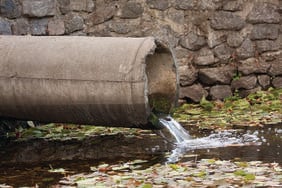 We thought it might be helpful for those of you with questions regarding EPA Method 245.7 to create a blog post addressing some of these questions. If you have any questions regarding EPA 245.7 that we haven't addressed here, please let us know and we will do our best to provide you with the answer.
We thought it might be helpful for those of you with questions regarding EPA Method 245.7 to create a blog post addressing some of these questions. If you have any questions regarding EPA 245.7 that we haven't addressed here, please let us know and we will do our best to provide you with the answer.
Q: What is EPA Method 245.7?
A: Published in March 2007, Method 245.7: Mercury in Water by Cold Vapor Atomic Fluorescence Spectrometry is a simple cost-effective method for determining the level of mercury in wastewater, as well as drinking water, marine water and ground waters. It was developed to satisfy the significantly lower detection limits required by the Clean Water Act. It provides the “environmental monitoring community with rugged analytical protocol capable of determining mercury at the concentrations typically regulated under state water quality standards.”[i]
Q: What are the benefits of this protocol?
A: Laboratories that measure mercury in waters will find this method enables them to measure mercury at lower levels (5.0 parts per thousand) with less time and effort than previous methods.
Q: How is the mercury measured?
A: This method measures mercury by cold-vapor atomic fluorescence spectrometry (CVAFS), a brominating digestion and ultra-pure argon as carrier gas. It is similar to EPA Method 1631, which was introduced to provide “reliable measurements at the lowest EPA ambient water quality criteria for mercury under the National Toxics Rule and in the Great Lakes and Tribes.”[ii] While both 1631 and 245.7 use a CVAFS detector, 1631 uses purge and gold trap isolation while 245.7 uses liquid-gas separation and a dryer tube for analyte isolation.
Q: How are samples prepared for analysis for this method?
A: Method 245.7 employs a much simpler and less time-consuming digestion than used with the cold vapor atomic absorption spectrometry (CVAAS) methods, which use HNO3, H2SO4, and KMnO4 followed by prereduction with hydroxyl amine hydrochloride. With 245.7, samples should be filtered if necessary, stabilized with 5 ML/L of 12N HCL and stored in Teflon or borosilicate glass bottles. All sample and standards are treated with a bromide/bromate solution and allowed to stand for at least 30 minutes to oxidize mercury to Hg+2. This method is does not specify a sample heating step, , which eliminates both time and the hardware typically necessary for water baths or digestion blocks.
Q: What are known interferences for this method?
A: Gold, silver and iodide are among the key interferences for 245.7. Brominating digestion combined with atomic fluorescence detection will help to eliminate many of the chloride, sulfide and molecular absorption interferences. A membrane drying tube is used to reduce quenching and remove water vapor from transfer tubing. Samples may become contaminated with trace metals in various ways, from labware containers to sampling equipment, and reagents to atmospheric inputs. To avoid contamination or interference, analysts need to ensure that sample analysis is performed in environments that are free from contamination.
Q: What are the quality control requirements for this method?
A: This is a “performance-based” method with required quality control checks, including significant attention to contamination control. Quality control starts with the calibration curve. Linearity, freedom from contamination, and low concentration accuracy must be demonstrated before analysis may proceed. Throughout analysis, the continued validity of the calibration must be confirmed by method blank (≤5.0 ppt) and Ongoing Precision & Recovery Check (OPR @ 10 ppt).
Q: How can Teledyne help labs to use this method in their mercury testing?
A: The Hydra AF by Teledyne Leeman Labs was designed specifically to automate Method 245.7 analysis. A peristaltic pump mixed each sample or standard with stannous chloride solution to produce free mercury. Argon bubbles through the solution in a gas/liquid separator, transporting the free mercury to a high-sensitivity fluorescence cell for quantification. The instrumentation is calibrated with solutions of known concentrations using the required “calibration factor” algorithm. A sample can be analyzed in only 2-3 minutes using a Hydra AF.
For information on Teledyne Leeman Labs's Mercury Analyzers commonly used for CVAF EPA Method 245.7 http://www.teledyneleemanlabs.com/products/mercury/hydraII-af/index.asp
Download our practical guide to selecting the right Mercury Analyzer for your needs:
[i]http://water.epa.gov/scitech/methods/cwa/bioindicators/upload/2007_07_10_methods_method_245_7.pdf
[ii] ibid

